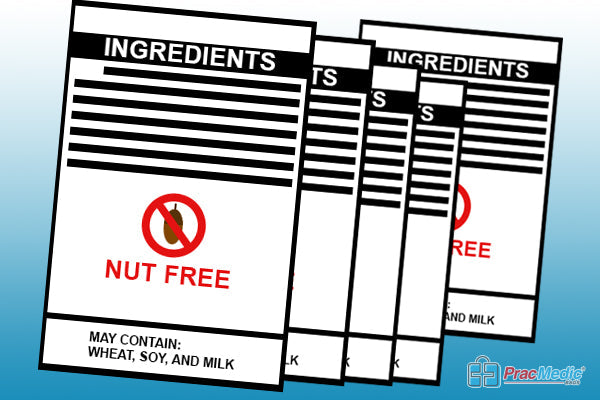
Dangers of Undeclared Ingredients on Food Labels
Share

People who have food allergies generally prevent attacks by removing those allergens or problem foods out of their diet. Parents teach their kids to be aware of any problem foods and the importance of reading product labels.
Unfortunately, even with all this precaution and preparation, we still hear stories of anaphylactic attacks and deaths as a result of undeclared ingredients or mislabelling on food. These so-called accidents could be avoided though – If food manufacturers were more vigilant.
Importance of Food Labels
Food labels inform consumers of the ingredients in a specific food. Of course when it comes to a specific product, such as a pack of peanuts – it’s pretty obvious. But for things like breakfast cereal – there could be any number of ingredients (and of course being made in a factory, also presents hazard(s).
Knowing what we are eating is one of the consumers’ basic rights. And this information is particularly vital for those who follow a specific diet.
Legally, consumers in the US are protected by FALCPA or Food Allergen Labeling and Consumer Protection Act of 2004 which requires food labels to note allergens in plain language. In Australia and New Zealand, the Food Standards Australia NewZealand (FSANZ) regulations state that allergens must be listed on the product label “whenever they are present in food as ingredients (or ascomponents of food additives or processing aids), however small the amounts present.” However, around the world this law isn’t the same, which poses a major risk to travellers.
Why Food Mis-Labelling Is Dangerous

Food mis-labelling caused almost half of the product recalls documented in 2017, according to the Food Safety Magazine’s annual summary. It shows 218 of 456 food recalls of 2017 were as aresult of undeclared allergens.
Food labelling becomes dangerous if allergens are not included or given mention (this product MAY include…). This is simply because severe food allergy reaction or anaphylaxis can be triggered by mild exposure, not just with someone consuming the food itself.
Another danger in food labelling is declaring half truths. There are cases where a food is declared nut free and even has a “nut free” stamp for consumers – however, this doesn’t mean the product hasn’t been made at a manufacturing plant where nuts are present. They may have produced their “nutfree” food using the same machine, tools, or utensils. This is why in Australia businesses must declare anything that MAY cause contamination.
Packaging can also cause confusion. In Australia recently, a girl died after she consumed a packet of biscuits that her mother “thought” she’d had many times before. Unfortunately the packaging was so similar to the product she’d consumed many times, that the mother didn’t think to check the ingredients properly – and the new packet of biscuits contained nuts. Which in turn, led to anaphylaxis and the death of her daughter. Heartbreaking and it could have been avoided.
Staying Safe Amidst Undeclared Allergens on Food Labels

If you or any of your loved ones have extreme food allergies, the safest option is to prepare your own food and snacks. Don’t worry if you don’t know how to cook. You can easily check recipes online and use social media to consult food allergy communities.
Fortunately there are plenty of alternatives to most of our allergens. So your food will still taste amazing – and you can be rest assured knowing it is safe!
We recently featured a blog about the importance of training our kids to read product labels. If you want to check it out, click the link here.
